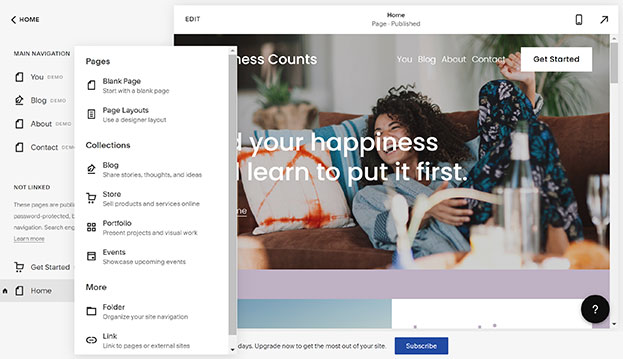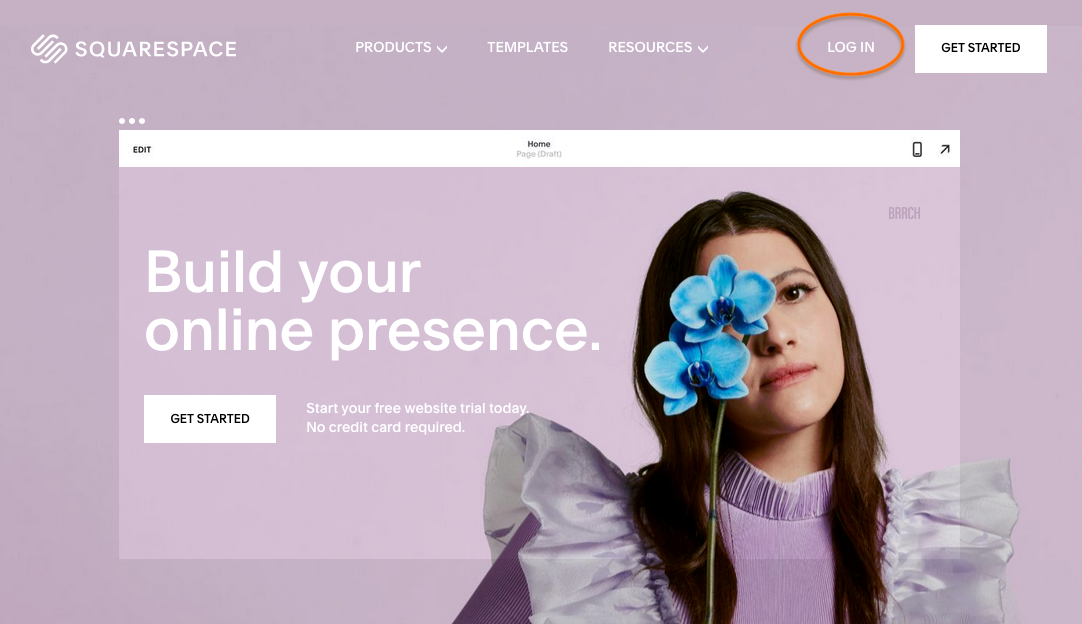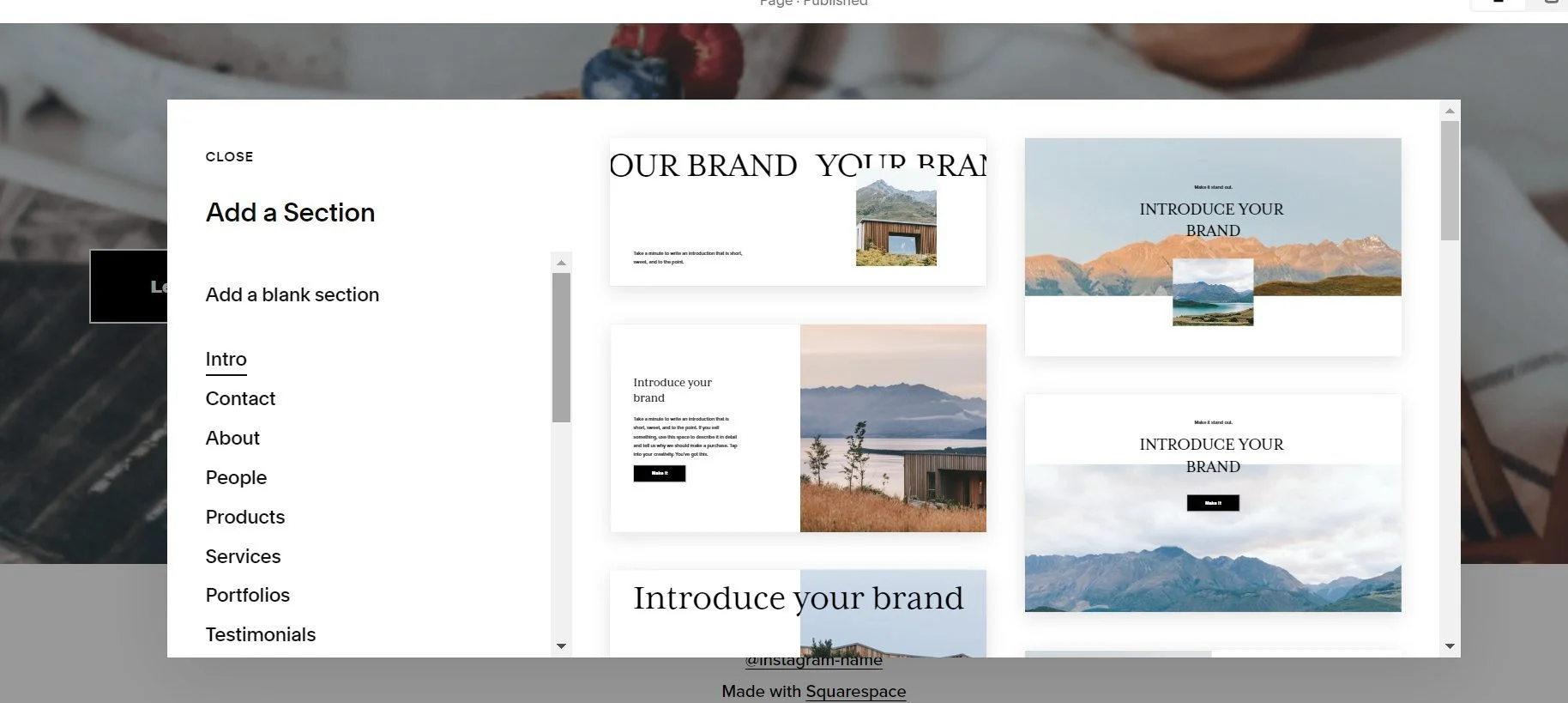Do Web Designers Use Squarespace? Pros, Cons, and When It’s the Best Choice
When I think about building a stunning website quickly, Squarespace always pops into my mind. It’s known for its easy-to-use interface and sleek templates, making it a go-to choice for many small business owners and creatives. But I often get asked if professional web designers actually use Squarespace or if they stick to more complex platforms.
I’ve seen the web design landscape shift a lot over the years. While some designers swear by custom coding, others embrace tools like Squarespace for their speed and flexibility. The real question is whether Squarespace meets the needs of professionals or if it’s just a tool for beginners. Let’s dive into what web designers really think about using Squarespace and why it might be part of their toolkit.
Understanding Squarespace as a Web Design Platform

Squarespace offers a hosted content management system with built-in templates and drag-and-drop tools. I see web designers use Squarespace to create visually compelling sites without coding custom layouts. The platform’s grid-based design, style editor, and pre-designed blocks help me build cohesive site structures quickly.
I customize settings for typography, color palettes, and image presentations using Squarespace’s intuitive interface. Designers like me often switch between the template’s design controls and bespoke code blocks if a project requires custom HTML, CSS, or JavaScript. Squarespace supports responsive design, letting me preview layouts across desktop and mobile devices in real time.
Squarespace sites include SEO tools, SSL certificates, and hosting, allowing web designers to streamline workflow and reduce external dependencies. I benefit from integrations with tools like Google Analytics, ecommerce functions, and appointment scheduling. Client handoff and training become more efficient due to the platform’s consistent dashboard and support resources.
Feature Comparison Table
| Feature | Squarespace | Custom HTML/CSS | WordPress |
|---|---|---|---|
| Drag-and-drop Builder | Yes | No | Varies (with plugins) |
| Built-in Templates | 140+ | No | Thousands |
| Hosting Included | Yes | No | Varies |
| SSL Certificate | Yes | No | Varies |
| Ecommerce Tools | Yes | No | Yes |
| Responsive Design | Yes | Custom | Yes (theme-based) |
| SEO Tools | Basic | Manual | Advanced (plugins) |
I select Squarespace when project speed, stability, and designer-client collaboration are priorities, especially for portfolio, ecommerce, or service-industry websites. If advanced customization or unique functionality is needed, I weigh the advantages against platforms like WordPress or hand-coded solutions. Squarespace’s feature set, reliable hosting, and built-in design guidance make it a strategic choice in my web designer toolkit.
Why Web Designers Choose Squarespace

Web designers consistently select Squarespace for projects where rapid deployment and reliable performance are essential. I see this preference reinforced by the way the platform streamlines both design and client collaboration workflows.
User-Friendly Interface and Features
Squarespace offers a user interface that speeds up site creation. I work with features like drag-and-drop editing, inline text editing, and visual content management that simplify building and maintaining modern sites. Real-time previews and one-click publishing remove barriers for both experts and clients. Squarespace integrates SEO tools, analytics dashboards, and secure hosting so I avoid the complexity of external plugins and manual server management.
Platform Feature Comparison Table
| Feature | Squarespace | WordPress | Wix |
|---|---|---|---|
| Drag-and-drop | Yes | With Plugin | Yes |
| Inline Editing | Yes | No | Yes |
| Built-in Hosting | Yes | No | Yes |
| Native SEO Tools | Yes | Limited | Yes |
| Analytics Dashboard | Yes | With Plugin | Yes |
Built-In Templates and Customization Options
Squarespace provides a curated set of templates tailored to industries like portfolios, blogs, and restaurants. Each template follows responsive design practices, so I deliver visually consistent experiences across devices. I can adjust typography, color palettes, layout spacing, and navigation without code, giving clients more autonomy. Advanced custom CSS and code injection options enable me to tailor unique site elements when project requirements demand extra flexibility.
Cost and Efficiency Benefits
Squarespace consolidates hosting, security, SSL certificates, and domain management under one subscription. I save time compared to managing separate vendors for client projects. Monthly fees start around $16 which streamlines budgeting for small businesses. The lack of required third-party updates means I allocate less time to ongoing maintenance. When deadlines are tight or budgets limited, I rely on Squarespace’s set billing and predictable workflows.
| Plan Name | Monthly Cost (USD) | SSL Included | Custom CSS | Analytics Included |
|---|---|---|---|---|
| Personal | $16 | Yes | No | Basic |
| Business | $23 | Yes | Yes | Advanced |
| Commerce Basic | $27 | Yes | Yes | Advanced |
When Do Web Designers Avoid Squarespace?

Web designers often look beyond Squarespace when a project demands high customization or advanced scalability. I consider project-specific features and the long-term goals of clients before recommending a platform.
Limitations in Customization and Scalability
Squarespace offers limited support for advanced customizations compared to open-source platforms. I encounter restrictions when integrating third-party APIs, adding custom backend functionality, or implementing unique design elements outside its template system. Projects requiring full-stack development, complex user permissions, or scalable e-commerce operations typically benefit from alternatives like WordPress, Shopify, or custom development.
| Platform | Custom Code Access | 3rd-Party Integrations | Scalability |
|---|---|---|---|
| Squarespace | Limited | Basic | Suited for SMEs |
| WordPress | Full | Extensive | Enterprise-ready |
| Shopify | Moderate | Wide | High-volume e-commerce |
| Custom Solution | Unlimited | Any | Unlimited |
Client Needs and Project Requirements
Client or project requirements often determine my choice. When clients need a highly unique appearance, niche functionality, or integrations with proprietary systems, I avoid Squarespace due to its closed environment. For projects with strict branding guidelines, multi-language support, or sophisticated content structures—such as those for large organizations or fast-growing startups—I select platforms that enable granular control over the user experience, codebase, and infrastructure.
| Client Need | Platform Preference | Example |
|---|---|---|
| Custom User Portals | WordPress/Custom | Online banking, membership sites |
| Advanced Multilingual Sites | WordPress/Drupal | International corporations |
| Proprietary System Integrations | Custom Solutions | Enterprise software dashboards |
| Extensive Content Taxonomies | WordPress/Drupal | News media, university websites |
| Highly Regulated Environments | Custom Solutions | Health, finance, or casino platforms |
Real-World Examples: Web Designers Using Squarespace
I see web designers use Squarespace in real-world projects across portfolio sites, small business websites, and client-focused solutions. These instances highlight how Squarespace supports both rapid deployment and design flexibility.
Portfolio Sites and Small Business Websites
I find Squarespace common in designer portfolios and service-based small business websites. Designers leverage Squarespace’s template system for clean layouts and integrated galleries, showcasing portfolios for photographers, illustrators, and interior designers. Small business examples include hair salons, fitness trainers, and consultancy firms that need fast launches, reliable performance, and easy updating without developer support.
| Project Type | Example Industry | Use Case Description | Key Squarespace Feature |
|---|---|---|---|
| Designer Portfolio | Photography, UI/UX | Showcasing projects in galleries | Visual templates, galleries |
| Small Business Site | Fitness, Retail, Salon | Service information and bookings | Booking forms, contact widgets |
| Freelancer Presence | Copywriting, Consulting | Personal branding and client outreach | Landing pages, blogs |
Case Studies From Professional Web Designers
I identify agencies and freelancers who document Squarespace-driven solutions for real clients. For example, design firm Big Cat Creative uses Squarespace to deliver brand-aligned sites for creative entrepreneurs, highlighting workflow speed and handoff simplicity. Designer Paige Brunton details building custom sites for coaches and consultants, noting Squarespace’s seamless content management for non-technical clients. These case studies reinforce how professional web designers adopt Squarespace where ongoing client empowerment and template-based design matter.
| Designer/Agency | Client Type | Outcome Focus | Cited Benefit |
|---|---|---|---|
| Big Cat Creative | Creative Entrepreneurs | Fast turnaround | Efficient workflows |
| Paige Brunton | Coaches, Consultants | Brand customization | Simple content management |
| TRÜF Creative | Brands, Startups | Visual storytelling | Integrated portfolio tools |
Comparing Squarespace With Other Web Design Tools
Squarespace offers a streamlined web design experience compared to other platforms. I use its all-in-one system for hosting, templates, and built-in SEO tools, which simplifies workflows for both clients and designers. Platforms like WordPress, Wix, and Shopify each provide distinct advantages, so my platform choice often depends on specific project requirements.
I rely on Squarespace for projects like artist portfolios, small retail brands, and consulting websites because it delivers reliable performance with minimal setup. However, if I take on advanced e-commerce projects, multilingual sites, or highly customizable casino websites, I move to platforms that support deeper customization and third-party integrations.
The following table presents a side-by-side comparison of Squarespace, WordPress, Wix, and Shopify, illustrating their key strengths and feature sets in a web designer’s context:
| Platform | Strengths | Best Use Cases | Customization Level | Hosting | Cost Model |
|---|---|---|---|---|---|
| Squarespace | Built-in hosting, drag-and-drop, SEO tools | Portfolios, small business sites | Moderate | Included | Subscription (all-in-one) |
| WordPress | Open-source, plugin ecosystem, deep flexibility | Blogs, complex multi-user sites | High | Separate | Free core; hosting/plugin fees |
| Wix | Easy visual builder, app marketplace | Personal, local business sites | Moderate | Included | Subscription (tiered) |
| Shopify | E-commerce focus, payment integrations | Online stores, casino websites | Moderate | Included | Subscription + transaction |
When designing for casino websites, I require advanced transaction security, age verification tools, and compliance modules that go beyond Squarespace’s built-in features. For these projects, Shopify or custom WordPress implementations provide the robustness and flexibility necessary for a regulated and scalable casino environment.
Conclusion
From my experience, Squarespace fits perfectly into the modern web designer’s toolkit. It’s not about choosing one platform forever but about picking the right tool for each project. I find that Squarespace streamlines my workflow and lets me deliver polished results quickly when speed and reliability matter most.
When clients need something more complex or highly customized, I’m always ready to explore other options. Ultimately, it’s about matching the platform to the project’s needs and ensuring my clients get the best solution possible.
Frequently Asked Questions
Do professional web designers use Squarespace?
Yes, many professional web designers use Squarespace, especially for projects that need rapid development, elegant design, and easy client collaboration. However, for complex websites requiring advanced customization, designers may choose other platforms.
What makes Squarespace popular among small businesses and creatives?
Squarespace is popular because of its user-friendly drag-and-drop tools, attractive templates, responsive designs, and built-in features like hosting and SEO tools. This all-in-one model saves time and makes managing a website simple for non-technical users.
How does Squarespace compare to platforms like WordPress and Wix?
Squarespace offers an all-in-one solution with hosting, templates, and SEO tools included. It’s easier to use than WordPress and offers more integrated features than Wix. However, WordPress excels at customization and scalability, while Wix provides flexible design options.
Can Squarespace be used for e-commerce websites?
Yes, Squarespace supports e-commerce features such as product listings, payment integration, and inventory management. However, it’s best suited for small online stores. Larger, more complex e-commerce sites may benefit from specialized platforms like Shopify.
What are the main limitations of Squarespace for web designers?
Squarespace has limited customization options compared to open-source platforms like WordPress. It may not support complex features, advanced user permissions, or extensive third-party integrations required for some projects.
When should a web designer choose a platform other than Squarespace?
Designers should consider alternatives like WordPress, Shopify, or custom solutions when a project needs advanced customization, complex e-commerce features, multilingual support, or unique content structures not supported by Squarespace.
Is Squarespace a good choice for portfolio websites?
Yes, Squarespace is an excellent option for portfolios, especially for creatives like photographers, artists, and consultants. Its templates and gallery features make it easy to showcase visual work with clean, professional designs.
Does Squarespace include hosting and security in its plans?
Yes, all Squarespace plans include built-in hosting, SSL security, and domain management. This simplifies website maintenance and reduces the need to purchase additional services from third-party providers.
How does Squarespace support collaboration with clients?
Squarespace’s intuitive interface and real-time editing make it easy for web designers and clients to collaborate. Clients can preview changes, update content, and manage their sites with little technical expertise.
What types of projects are best suited for Squarespace?
Squarespace works best for small business websites, creative portfolios, and simple online stores that need reliable performance, quick setup, and visually appealing templates without advanced customization.
